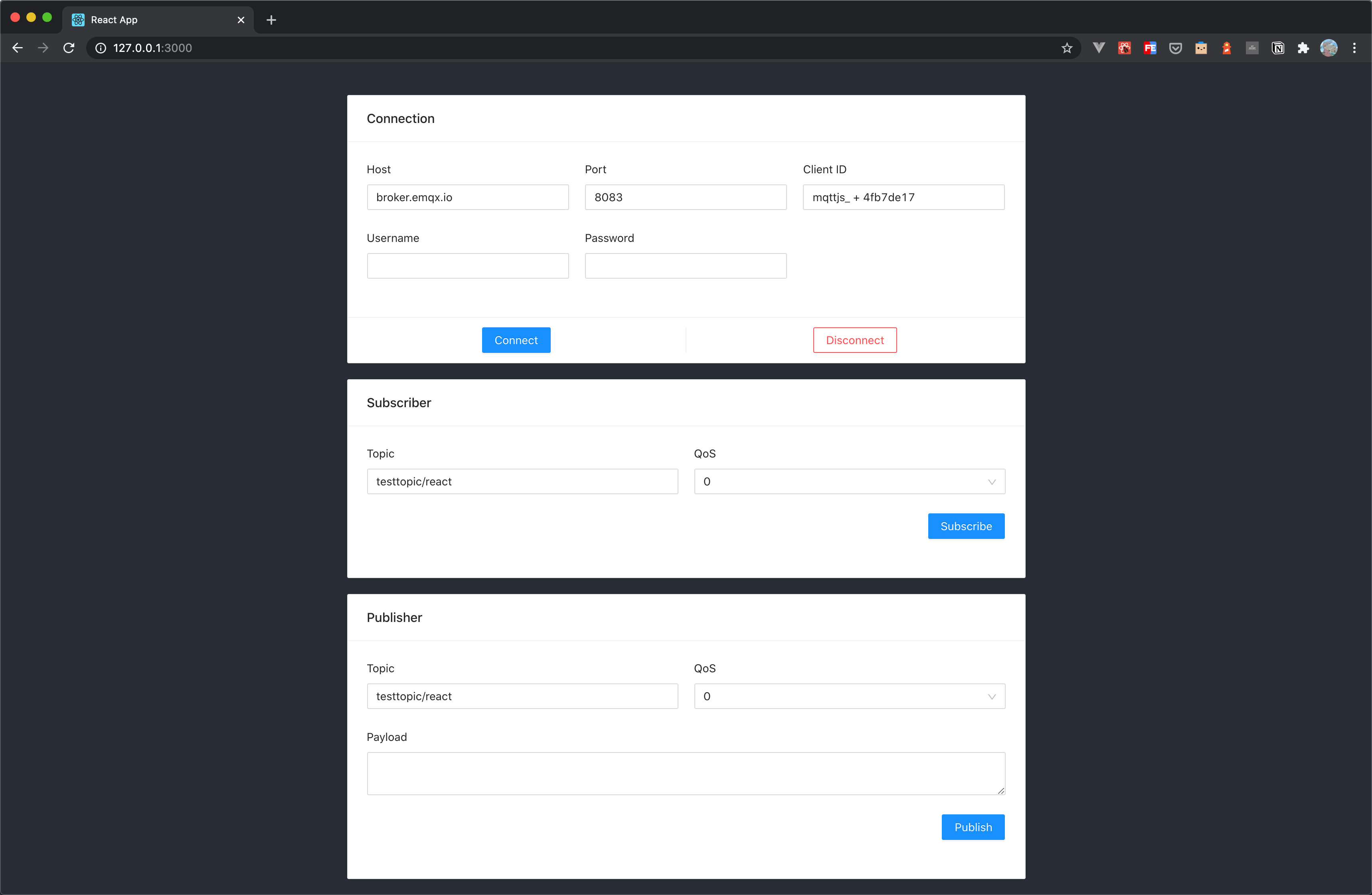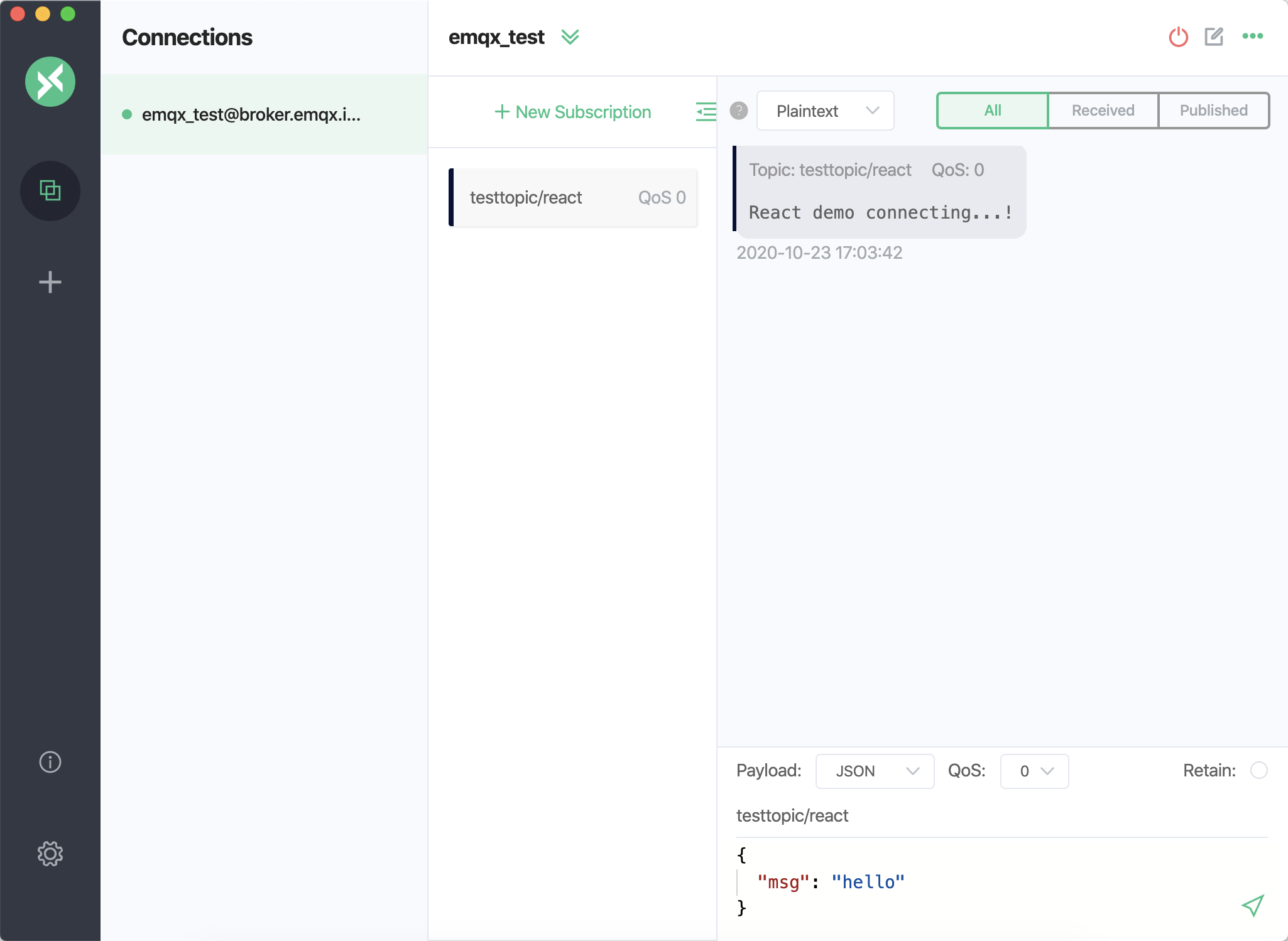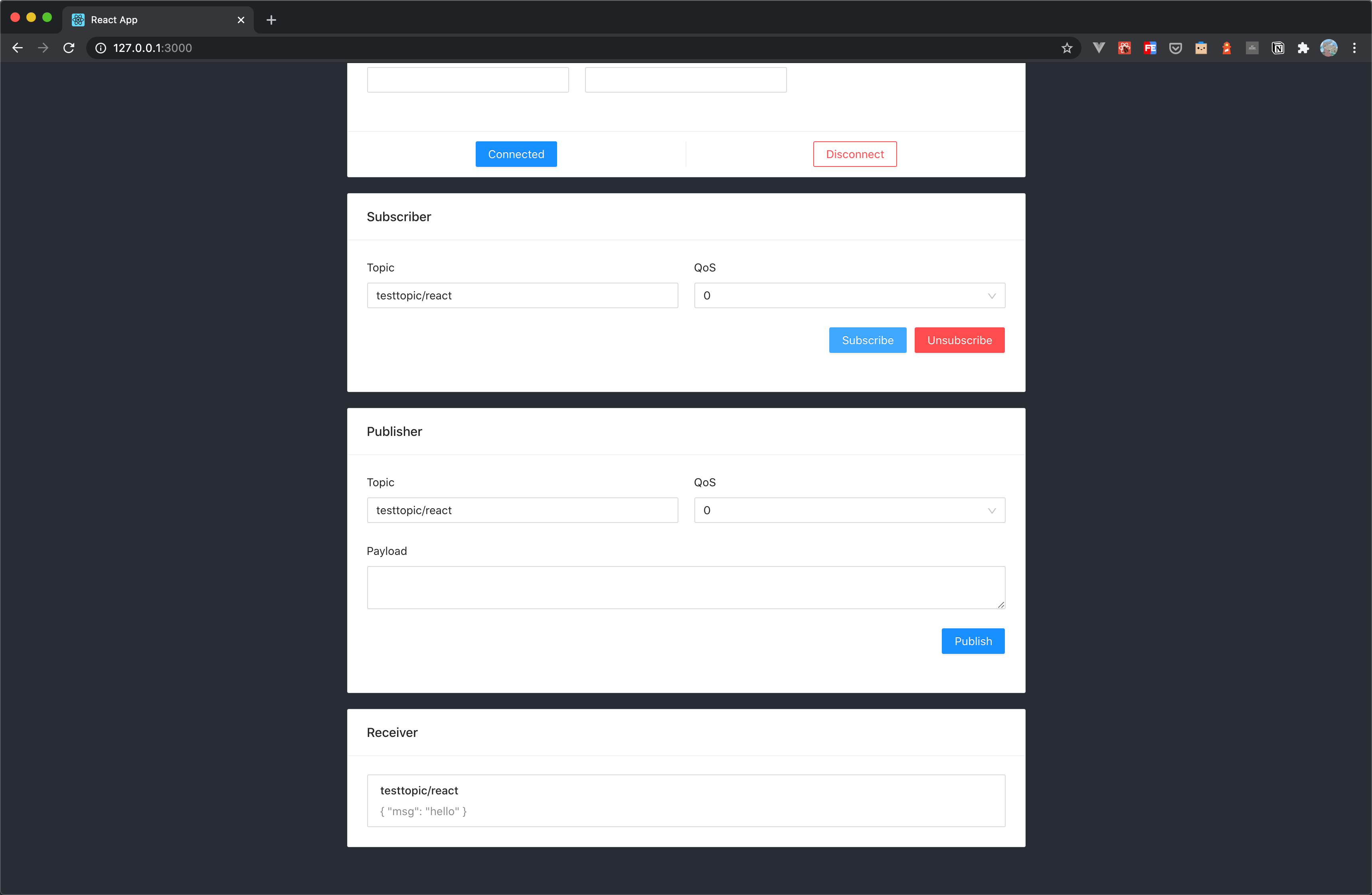How to Use MQTT in the React Project
This article mainly introduces how to use MQTT in the React project.
React (also known as React.js or ReactJS) is an open-source, front-end, JavaScript library for building user interfaces or UI components. It is maintained by Facebook and a community of individual developers and companies. React can be used as a base in the development of single-page or mobile applications. However, React is only concerned with rendering data to the DOM, and so creating React applications usually requires the use of additional libraries for state management and routing. Redux and React Router are respective examples of such libraries.^1
This article mainly introduces how to use MQTT in the React project for implementing connect, subscribe, messaging, unsubscribe, etc., between the client and MQTT broker.
Project Initialisation
New Project
Reference link: https://reactjs.org/docs/getting-started.html
Creating new React applications with
Create React Appnpx create-react-app react-mqtt-testIf you need to use TypeScript, simply add the --template typescript parameter at the end of the command line
npx create-react-app react-mqtt-test --template typescriptThen add the TypeScript type library required in the React project
npm install --save typescript @types/node @types/react @types/react-dom @types/jest # or yarn add typescript @types/node @types/react @types/react-dom @types/jestThe use of TypeScript will not be the focus of the examples in this article, but if you wish to use it, you can add TypeScript features after referring to the creation example and the full code examples.
Import via CDN
<script crossorigin src="https://unpkg.com/react@16/umd/react.production.min.js"></script> <script crossorigin src="https://unpkg.com/react-dom@16/umd/react-dom.production.min.js"></script>
Install the MQTT Client Library
As React is a JavaScript library, it is possible to use MQTT.js as the MQTT client library.
The following methods 2, 3 are more suitable for referencing projects created by React via CDN links.
Installation via the command line, either using the npm or yarn command (one or the other)
npm install mqtt --save # or yarn add mqttImport via CDN
<script src="https://unpkg.com/mqtt/dist/mqtt.min.js"></script>Download to the local and then import using the relative path
<script src="/your/path/to/mqtt.min.js"></script>
The Use of MQTT
Connect the MQTT Broker
This article will use the free public MQTT broker which is provided by EMQX. This service is based on EMQX's MQTT IoT cloud platform to create. The server access information is as follows.
- Broker: broker.emqx.io
- TCP Port: 1883
- Websocket Port: 8083
Connect
const [client, setClient] = useState(null);
const mqttConnect = (host, mqttOption) => {
setConnectStatus('Connecting');
setClient(mqtt.connect(host, mqttOption));
};
useEffect(() => {
if (client) {
console.log(client)
client.on('connect', () => {
setConnectStatus('Connected');
});
client.on('error', (err) => {
console.error('Connection error: ', err);
client.end();
});
client.on('reconnect', () => {
setConnectStatus('Reconnecting');
});
client.on('message', (topic, message) => {
const payload = { topic, message: message.toString() };
setPayload(payload);
});
}
}, [client]);
Subscribe
const mqttSub = (subscription) => {
if (client) {
const { topic, qos } = subscription;
client.subscribe(topic, { qos }, (error) => {
if (error) {
console.log('Subscribe to topics error', error)
return
}
setIsSub(true)
});
}
};
Unsubscribe
const mqttUnSub = (subscription) => {
if (client) {
const { topic } = subscription;
client.unsubscribe(topic, error => {
if (error) {
console.log('Unsubscribe error', error)
return
}
setIsSub(false);
});
}
};
Publish
const mqttPublish = (context) => {
if (client) {
const { topic, qos, payload } = context;
client.publish(topic, payload, { qos }, error => {
if (error) {
console.log('Publish error: ', error);
}
});
}
}
Disconnect
const mqttDisconnect = () => {
if (client) {
client.end(() => {
setConnectStatus('Connect');
});
}
}
Test
We have written the following simple browser application using React with the ability to create connections, subscribe to topics, send and receive messages, unsubscribe, and disconnect.
The complete project example code: https://github.com/emqx/MQTT-Client-Examples/tree/master/mqtt-client-React。

Use MQTT 5.0 client tool - MQTT X as another client to test sending and receiving messages.

You can see that MQTT X can receive messages from the browser side normally, as can be seen when sending a message to the topic using MQTT X.

Summary
In summary, we have implemented the creation of an MQTT connection in the React project, and simulated subscribing, sending and receiving messages, unsubscribing, and disconnecting between the client and MQTT broker.
In this article, we use React v16.13.1, so the Hook Component feature will be used as an example code to demonstrate, or if required, you can refer to the ClassMqtt component in the full example code to use the Class Component feature for project building.
Originally published at emqx.com
